Transformed Practice
I was particularly drawn to the idea of involving transformation by making new use of old materials from the New London Group reading this week. I sat for a while, staring at the contents of my bag, and wondered how I might achieve that in audio form. The gestural, visual, spatial, and linguistic modes all come quite easily to me but audio is an area I am still inexperienced, and thus weak, in (despite being absolutely fascinated by the world of foley). So I mused over my objects, and the digital literacies I have as well as the technologies I have with my in quarantine at the moment. Sadly, my H5n audio recording device we use for video interviews was at home, but I did have my phone and my macbook with editing software with me. And so, my design process began.
I wanted to take the available tools I had and work with a less predictable (and more abstract) version of meaning for this re-iteration of the Whats in My Bag task. Particularly because I had done such a literal task in the first version. I also wanted to, for the sake of learning and expanding my digital literacy, focus on purely audio-based mode bending rather than multi-modal bending. Using my informal context of a hotel room, and my make-do technologies, I put my literacies to work to see what I could do. One of the major benefits of my environment was near-silence, something I could never have in a formal school environment, which lent itself well to recording sounds.
By using all potential resources I could get my hands on, I put something together I may never have achieved in my usual spaces and really revelled in the transformed practice of taking our first task and re-creating it in a new mode. This was a really immersive dive into situation practice, in which overt instruction occurred by me applying the literacies I had available to a new design that needed new skills. This mode-bent backpack representation also critically frames my current context and purpose: the audio quality is not perfect, the length may not be ideal, but it represents what I had available in my quarantine room and it fulfils the purpose of completing this week’s task and practicing one of the modes I am weakest in. Finally, it was a challenge that I really did find very fun to complete!
Backpack SoundTrack
After some contemplation, I decided to create what I have titled my “backpack soundtrack”. I took all the items in my bag and found out what kind of noises they could make. Then, I recorded their sounds and compiled it into something (hopefully) musical. I spend a lot of time listening to music whilst working and I love signing along when I’m in my own work spaces so this seemed a great way to further represent myself whilst mode-bending the task. I was also very inspired by two other pieces of media. The first is an excerpt from August Rush, a movie I would rent every weekend and watch repeatedly as a child. The second is a quarantine project a friend and fellow-filmmaker of mine did, which he titled Quarantine Musical.
So, with all the out the way, below is my mode-bent Whats in my Bag task. Whilst this is an audio production, it utilised almost all the modes in its creation. I had to use gesture to create sounds, tactile to create noises and play with the objects in my bag to see what noise I could create, spatial awareness to do this within a small room, and visual to track the objects I had or hadn’t recorded yet. Oral existed mostly in the form of me talking to myself, and notating what object I was recording so that I could sort it all when editing. Let me know what you think!
Thoughts for Education
I’ve been in the NLG cult since I read their multiliteracies piece in my first MET course, and re-reading their work with different focuses never fails to bring me new inspiration for how education could be. Aside from changes in our world that demand changes in instructional methods, multi-modal exercises and transformative have the capacity to add immense richness to education.
Giving students a task which they repeat and reinvent, offering them tasks in which they can chose their preferred modality, or even doing a series of tasks which work with a different modality each time has endless potential for 21st century education. It plays to theories of learning through play, theories of multiple intelligences, approaches with project-based learning, calls for epistemological learning, methods for developing critical thinking, and it also works to a number of 21st century skills and competencies. I’m sure I’ll get more inspired on this topic when seeing what other’s made for this weeks task. It’s always a perfect encapsulation of how wonderful these multi-modal exercises can be.
References
Cope, B. & Kalantzis, M. (2009). Multiliteracies: New literacies, new learning. Pedagogies: An International Journal, 4:3, 164-195, DOI:10.1080/15544800903076044
The New London Group. (1996). A pedagogy of multiliteracies: Designing social futures. Harvard Educational Review 66(1), 60-92.
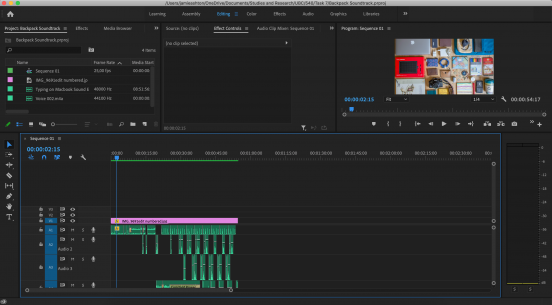
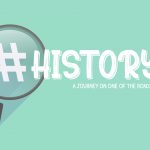

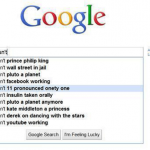
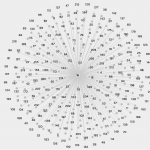
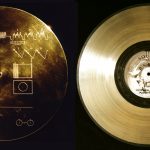
Emily
June 26, 2020 — 7:22 am
Hey Jamie,
I enjoyed your playful re-iteration of ‘What’s in your bag’ and the connections to August Rush. I have often thought of Montreal, in all its finest construction days, as a symphony of sounds, especially when I lived near the highways that were being taken down. The sounds of jackhammers, beeps, yelling and banging were the soundtrack to my apartment. Now, I find it easier to live with the sounds of the birds and the wind, but am reminded that it is easy to shift my perspective and view the ‘noise’ as music. Your focus on process of learning reminds me of the constructivist viewpoint by Catherine Fosnot, that “learning is development” (emphasis on is). We can not isolate the sounds of life, but by focusing solely on sound one can work to develop greater understanding and association among feelings, perspectives, and meaning-making.
Fosnot, C. T. (Ed.) (2013). Constructivism: theory, perspectives, and practice, 2nd Ed (pp.26-62). Columbia University: Teachers College Press.
Linda Duong
June 26, 2020 — 10:16 am
Hi Jamie,
Your bag sounds are so peaceful and I love the connections to August Rush! I haven’t seen August Rush, but I’m laughing about it because one of my favourite musicians is an extra in it. Apparently he was a twenty-something playing a 9-year old child ????
This piece really reminds me of soundscapes and how we can attend to specific sounds. Maybe this is also like what we discussed in Week 2 with language affecting though–what values are reflected with the sounds we select to construct a soundscape?
brian leavitt
July 20, 2020 — 11:25 am
Hi Jamie,
Really neat! I did something similar, recording the sounds that the items in my back make to give a more sensory understanding of them versus the more literal understanding of them from the original task. In contrast to yours, mine ended up more ‘ASMR-esque’, whereas you went for a musical touch. I think the intentionality of the sounds you created is a really neat juxtaposition to the more random assortment of noise I created. It did remind me of the noise and ‘music’ of everyday life – the sounds of a downtown street, for example. You don’t often think of that as music, but it can have musical qualities. It also speaks directly to what it is – I know I’m in my apartment without opening my eyes because it has a distinct ‘music’ to it. It’s an interesting way to think about describing something.
Jamie Ashton
August 5, 2020 — 5:19 am
Cool! I wondered which direction to take this in, and ASMR was one of the directions I really wanted to explore but ended up deciding on music instead. Definitely agree about the musicality of life, and it being a wonderful modality to use to describe things 🙂